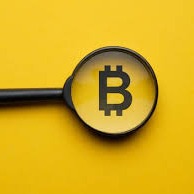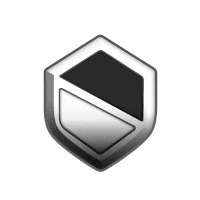


Four PriceFORM
FORM to USD converter
How do you feel about Four today?
About Four (FORM)
What Is BinaryX?
BinaryX is a GameFi platform that has made a significant mark in the blockchain gaming industry. The project is known for developing and hosting blockchain-based games that integrate the thrill of gaming with the principles of decentralized finance (DeFi). BinaryX began its journey as a decentralized derivative trading system but quickly adapted to the rising trends of GameFi and the Metaverse, transitioning into a hub for innovative gaming experiences. BinaryX's commitment to leveraging blockchain technology is evident in its popular games like CyberDragon, CyberChess, and CyberLand, all operating on the BNB Chain.
The platform's philosophy extends beyond mere gaming; it fosters an ecosystem where players are integral to the game's economy, reaping benefits from its growth and success. This player-centric approach has been instrumental in BinaryX's rise, offering users genuine ownership, community engagement, and a share in the financial rewards. With the introduction of a Decentralized Autonomous Organization (DAO) system, BinaryX has also empowered its players with decision-making capabilities, further solidifying its position as a leader in the GameFi sector.
Resources
Whitepaper: https://binaryx.pro/whitepaper
Official Website: https://www.binaryx.pro/
How Does BinaryX Work?
BinaryX operates as a dual-function platform, serving both as a developer of blockchain games and as an Initial Game Offering (IGO) launchpad for other game developers. This dual functionality allows BinaryX to not only create its own engaging games but also to support and launch games developed by others. The platform provides a comprehensive service platform to developers, including a robust NFT asset trading platform, a high-speed sidechain optimized for GameFi, and an IGO platform to help new games attract traffic and raise funds.
The platform's native token, BNX, serves as the primary in-game currency and a tool for funding game development. BNX holders can participate in community governance, voting on key decisions, and have access to various community engagement events. BinaryX's commitment to innovation is also evident in its investment in a GameFi sidechain that promises improved transaction speeds, lower gas fees, and interoperability with the BNB Chain main network.
What Is BNX Token?
BNX is the native token of the BinaryX ecosystem. It is used for in-game transactions, as a governance token for DAO voting, and as a reward for community contributions. The BNX token has also been used to fund the development of new gaming projects through the Cyber Incubation Fund, demonstrating BinaryX's commitment to fostering innovation within the GameFi space.
In early 2023, BinaryX had a strategic token split to refine its economic model and lower the barrier to entry, aiming to broaden the adoption of BNX. This decision, backed by a majority of the community through a DAO vote, highlights the platform's dedication to community engagement and transparency. Today, BNX stands as a robust token with a strong performance in the market, underpinning BinaryX's vast array of gaming offerings and community-driven initiatives.
What Determines BinaryX's Price?
The price of BinaryX (BNX) is influenced by a combination of factors that are common to cryptocurrencies operating within the blockchain and GameFi sectors. Market demand is a primary determinant, driven by the popularity and user engagement of BinaryX's blockchain games. As players seek to purchase BNX for in-game transactions, governance participation, or investment in new games launched on the platform, the increased demand can lead to a rise in the token's price. Additionally, the success and virality of games like CyberDragon and CyberChess contribute to the perceived value of BNX, as these flagship titles attract more users to the BinaryX ecosystem.
Another critical factor is the overall sentiment in the cryptocurrency market, which can be swayed by broader economic events, regulatory news, and shifts in investor confidence. BinaryX's price is also responsive to its technological advancements and strategic decisions, such as token splits or updates to the gaming platform. For instance, the token split conducted by BinaryX was a strategic move to enhance its economic model and make the token more accessible, potentially affecting its price by altering the token's supply dynamics.
Furthermore, BinaryX's integration of DeFi elements into its gaming platform, such as staking rewards and the Cyber Incubation Fund, can create additional value for BNX. By offering players and investors various ways to earn returns on their BNX holdings, BinaryX not only incentivizes holding the token but also potentially increases its utility and scarcity. The platform's transparent governance model, which allows BNX holders to vote on key decisions, can also instill confidence in the token's value, as it reflects a community-driven approach to growth and innovation. These elements, combined with the platform's ongoing development and community initiatives, play a significant role in shaping the price trajectory of BNX in the volatile world of cryptocurrency investments.
For those interested in investing or trading BNX, one might wonder: Where to buy BinaryX? You can purchase BinaryX on leading exchanges, such as Bitget, which offers a secure and user-friendly platform for cryptocurrency enthusiasts.
AI analysis report on Four
Live Four Price Today in USD
Four Price History (USD)
 Lowest price
Lowest price Highest price
Highest price 
What is the highest price of Four?
What is the lowest price of Four?
Four Price Prediction
What will the price of FORM be in 2026?
What will the price of FORM be in 2031?
FAQ
What factors influence the price of Four coin?
Where can I buy Four coin?
Why is the price of Four coin so volatile?
How can I track the price of Four coin in real-time?
Has the price of Four coin reached its all-time high yet?
What is the future price prediction for Four coin?
Is Four coin a good investment?
Can global economic events affect the price of Four coin?
What are the risks associated with investing in Four coin?
What strategies can I use to trade Four coin effectively?
What is the current price of Four?
What is the 24 hour trading volume of Four?
What is the all-time high of Four?
Can I buy Four on Bitget?
Can I get a steady income from investing in Four?
Where can I buy Four with the lowest fee?
Four news
Four holdings by concentration
Four addresses by time held

Global Four Prices
- 1
- 2
- 3
- 4
- 5
How to buy Four(FORM)

Create Your Free Bitget Account

Verify Your Account

Convert Four to FORM
Join FORM copy trading by following elite traders.
New listings on Bitget
Buy more
Where can I buy Four (FORM)?
Video section — quick verification, quick trading

FORM to USD converter
Four ratings
Bitget Insights



Related assets
Additional info on Four
Coin overview
Coin-related
Trade-related
Coin updates
Trade
Earn
BTC/USDT
SpotBTC/USDT
MarginBTC/USDT
USDT-M FuturesBTC/USD
Coin-M Futures
































Four Social Data
In the last 24 hours, the social media sentiment score for Four was 3, and the social media sentiment towards Four price trend was Bullish. The overall Four social media score was 0, which ranks 89 among all cryptocurrencies.
According to LunarCrush, in the last 24 hours, cryptocurrencies were mentioned on social media a total of 1,058,120 times, with Four being mentioned with a frequency ratio of 0.01%, ranking 378 among all cryptocurrencies.
In the last 24 hours, there were a total of 303 unique users discussing Four, with a total of Four mentions of 94. However, compared to the previous 24-hour period, the number of unique users increase by 2%, and the total number of mentions has increase by 1%.
On Twitter, there were a total of 1 tweets mentioning Four in the last 24 hours. Among them, 0% are bullish on Four, 100% are bearish on Four, and 0% are neutral on Four.
On Reddit, there were 18 posts mentioning Four in the last 24 hours. Compared to the previous 24-hour period, the number of mentions increase by 50% .
All social overview
3